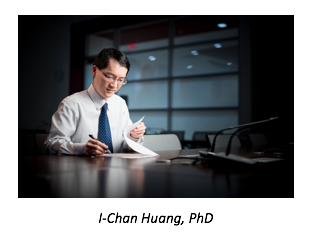Article
Consequences of Financial Hardship Faced by Childhood Cancer Survivors
Author(s):
Financial hardship in a substantial proportion of adult survivors of childhood cancer was found by investigators from St Jude Children’s Research Hospital, suggesting screening for financial problems in patients.

Investigators from St Jude Children’s Research Hospital recently conducted the largest study to date on the determinants and consequences of financial hardship on childhood cancer survivors. Upon finding hardship in a substantial proportion (65%) of adult survivors of childhood cancer, the investigators recommended that this population be screened for financial issues that might cause them to delay or skip medical care or to suffer psychological distress.
"Advances in treatment and supportive care have increased survival rates for most childhood cancers. By 2020, there will be an estimated 500,000 childhood cancer survivors in the United States," said first and corresponding author I-Chan Huang, PhD, an associate faculty member in the St. Jude Department of Epidemiology and Cancer Control, in a recent statement. "Until now, little was known about the financial hardships that survivors of pediatric cancer face."
The data was published in the Journal of the National Cancer Institute and pulled from the first evaluations of St Jude LIFE, a study aimed at improving life for childhood cancer survivors now and in the future. For the study, 2811 long-term survivors (mean age at evaluation = 31.8 years, years postdiagnosis = 23.6) were enrolled. Financial hardship, determinants, and consequences were examined in the survivors through the baseline survey and clinical evaluation. Material, psychological, and coping/behavioral domains were used to measure financial hardship.
Study outcomes consisted of health and life insurance affordability, retirement planning, symptoms, and health-related quality of life (HRQOL). Associations of determinants with financial hardship were estimated by odds ratios (ORs), which, in combination with regression coefficients, estimated associations of hardship with symptom prevalence and HRQOL, respectively. All statistical tests were 2-sided, according to the study authors.
Upon analysis, investigators found, that 22.4% (95% confidence interval [CI] = 20.8% to 24.0%) of participants reported material hardship, 51.1% (95% CI = 49.2% to 52.9%) reported psychological hardship, and 33.0% (95% CI = 31.1% to 34.6%) reported coping/behavioral hardship.
Furthermore, across all hardship domains, risk factors included annual household income of $39,999 or less versus $80,000 or more (material OR = 3.04, 95% CI = 2.08 to 4.46, psychological OR = 3.64, 95% CI = 2.76 to 4.80, and coping/behavioral OR = 4.95, 95% CI = 3.57 to 6.86) and below high school attainment versus college graduate or above (material OR = 2.22, 95% CI = 1.45 to 3.42, psychological OR = 1.75, 95% CI = 1.18 to 2.62, and coping/behavioral OR = 2.05, 95% CI = 1.38 to 3.06), the study authors wrote.
Higher material hardship (all P < .05) was associated with the following: myocardial infarction, peripheral neuropathy, subsequent neoplasm, seizure, stroke, reproductive disorders, amputation, and upper gastrointestinal disease. Across the 3 domains, hardship was also associated with somatization, anxiety and depression (all P < .001), suicidal ideation (all P < .05), and difficulty in retirement planning (all P < .001). In addition, statistically significantly lower HRQOL (all P < .001), sensation abnormality (all P < .001), pulmonary (all P < .05), and cardiac (all P < .05) symptoms were noted in survivors with hardship.
“We did not find that survivors treated at an early childhood stage had a higher or lower risk of financial hardship than adolescents,” Dr Huang explained to Rare Disease Report®, “but we did find that those who received high burden of treatment modalities like chemotherapy, radiation therapy, plus invasive surgery, had a higher risk of financial hardship than those who received low burden of treatment such as chemotherapy alone.”
He added that the findings reflects that those who received a high burden of treatment modalities had increased likelihood of developing medical complications or late effects, which could jeopardize their development (education attainment, employment, etc.). “Poor development earlier in life is associated with lower work productivity and decreased financial security as a person grows older,” he added.
As such, Dr Huang believes that primary care doctors and oncologists should routinely screen childhood cancer survivors for possible financial hardship. While St. Jude is developing a screening tool to help identify at-risk survivors as well as possible interventions to address the problem, for the meantime, Dr Huang recommends health care providers routinely ask patients who are childhood cancer survivors if they are unable to purchase medications, skip appointments for economic reasons or worry about how to pay their medical bills.
“In the clinical setting, clinicians should consider screening financial problems through the risk factors derived from this study to identify target patients for interventions,” said Dr Huang. “These interventions are especially important for those with low family income, low education background, middle-age working group, and chronic health conditions.”
Possible interventions, according to Dr Huang, could be providing education to improve financial literacy and helping survivors navigate referral systems to find financial support. “Importantly, financial hardship should be addressed through the health policy reform,” he added. “Because having chronic health conditions is a high risk of financial hardship, we need to make sure that our survivors with multiple conditions are able to obtain health insurance, to pay health insurance premium with a reasonable deductible or copay and access the necessary health screening and follow-up care.”
Photo:“St Jude/Peter Barta”




